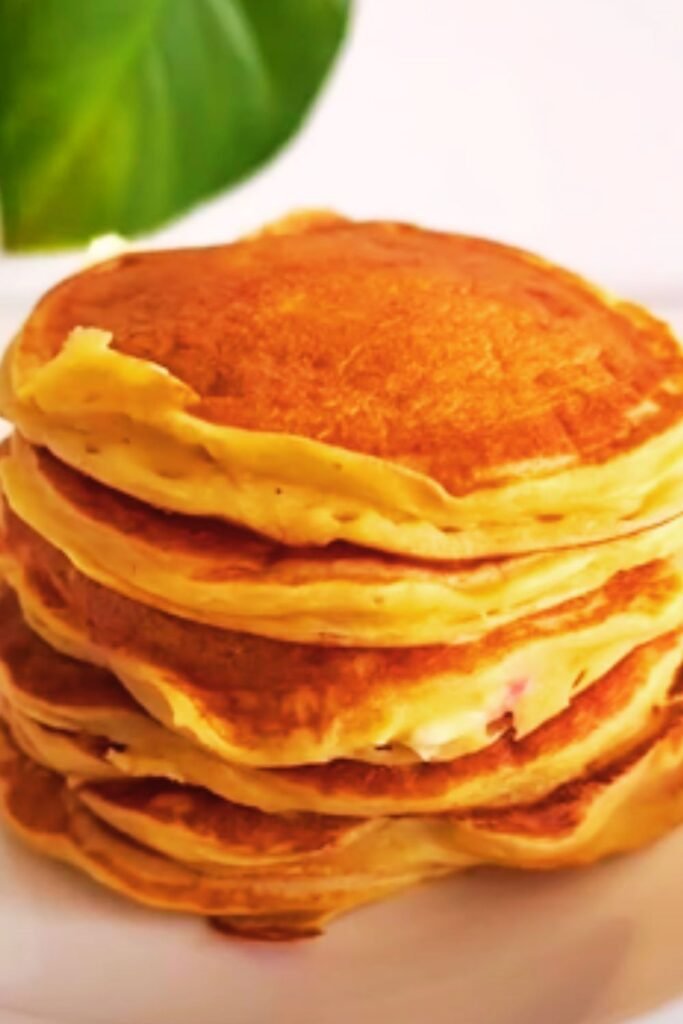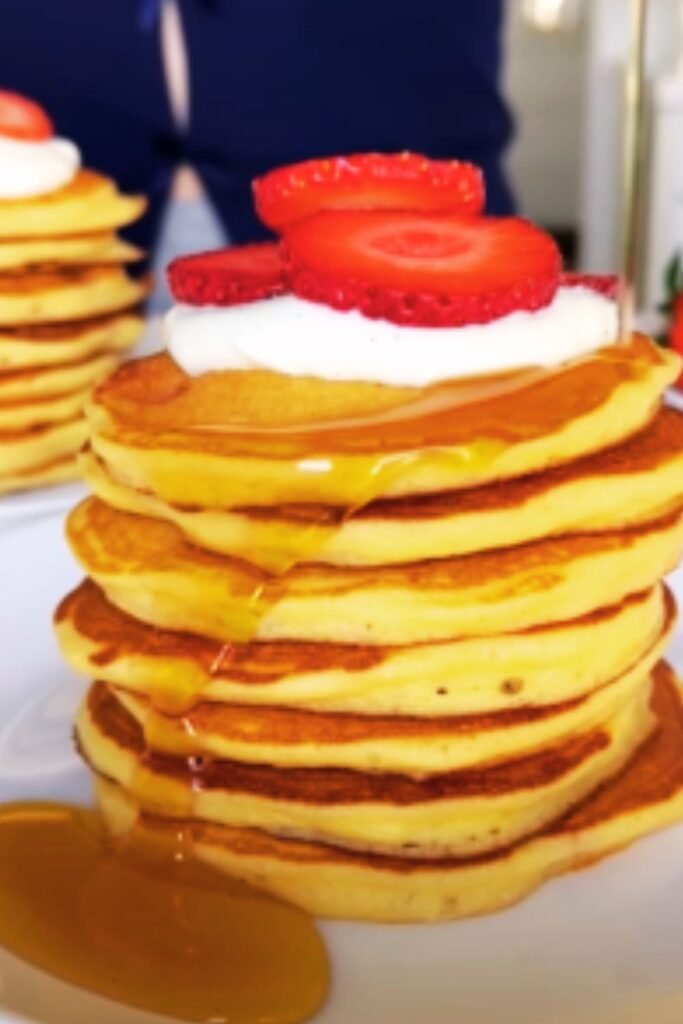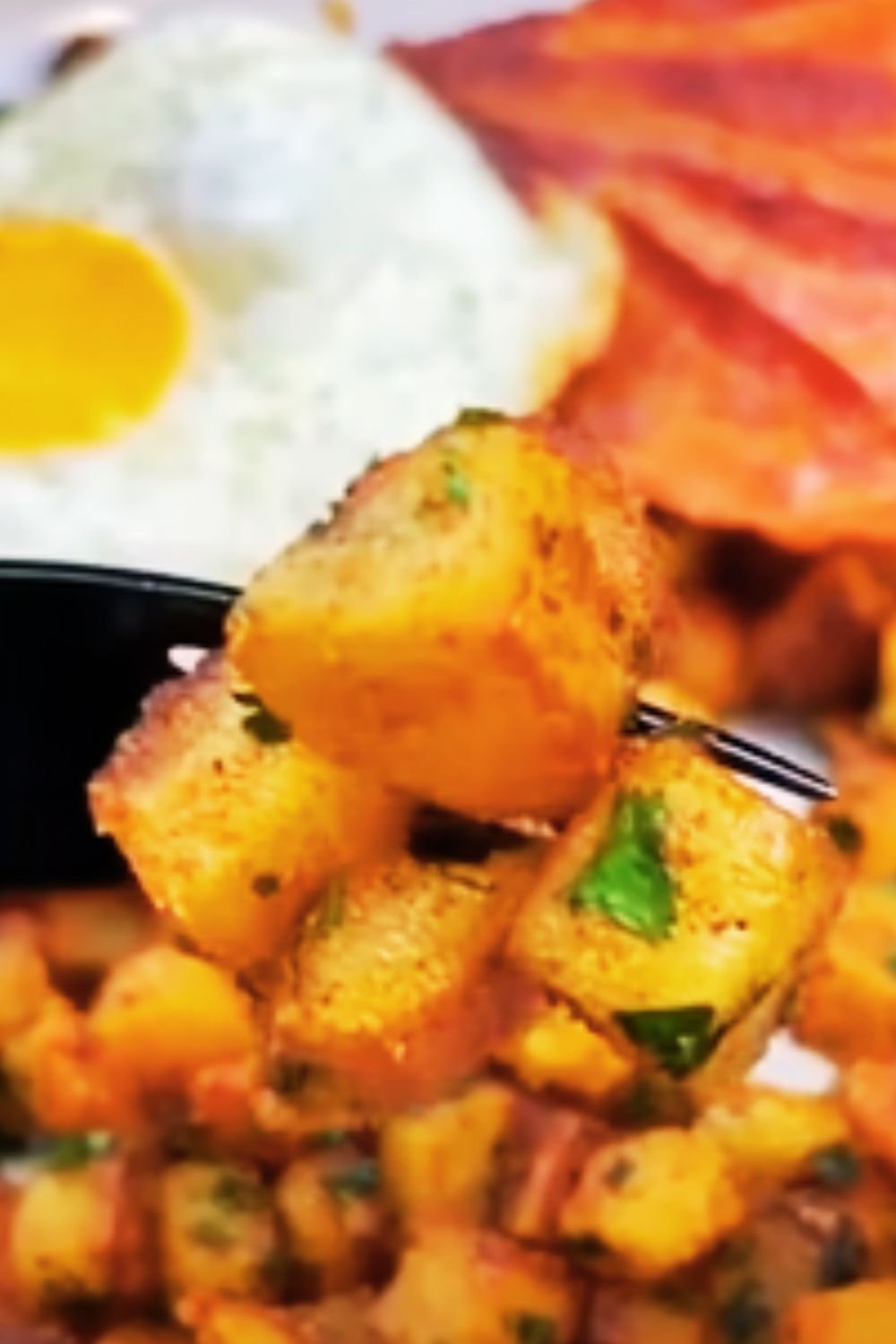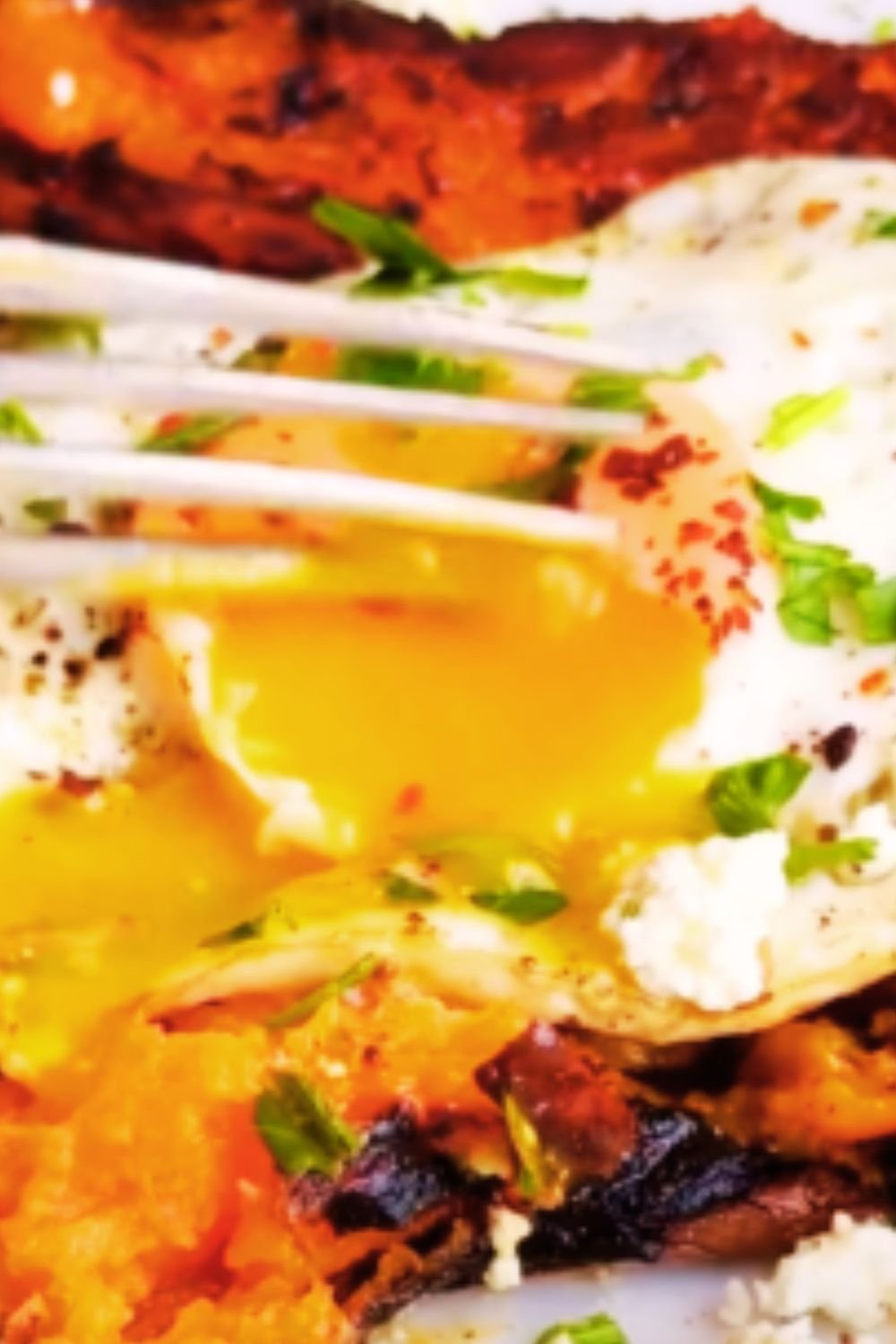When I first discovered the magic of combining fluffy pancakes with the rich, creamy essence of cheesecake and the bright sweetness of fresh strawberries, my weekend mornings were forever changed. These gluten-free strawberry cheesecake pancakes have become my go-to recipe for special occasions, lazy Sunday brunches, and whenever I want to treat myself and my loved ones to something extraordinary.
What makes these pancakes truly special isn’t just their incredible flavor profile – it’s how they manage to be both indulgent and accommodating. As someone who has navigated the world of gluten-free baking for years, I understand the frustration of recipes that promise the world but deliver dense, cardboard-like results. These pancakes are different. They’re light, fluffy, and so delicious that even gluten-loving friends have requested the recipe.
The beauty of this recipe lies in its thoughtful construction. I’ve spent countless mornings perfecting the balance between the tangy cream cheese layer, the sweet strawberry compote, and the tender pancake base. Each component complements the others, creating a harmonious breakfast experience that feels more like dessert but maintains the comforting essence of traditional pancakes.
Understanding Gluten-Free Pancake Success
Creating exceptional gluten-free pancakes requires understanding how different flours behave and interact. Unlike traditional wheat flour, gluten-free alternatives don’t contain the protein structure that gives conventional pancakes their characteristic texture. This means we need to be strategic about our ingredient choices and mixing techniques.
Key Flour Components:
- Almond Flour: Provides richness, moisture, and a subtle nutty flavor that pairs beautifully with strawberries
- Rice Flour: Creates structure and helps achieve that classic pancake texture
- Tapioca Starch: Adds chewiness and helps bind ingredients together
- Potato Starch: Contributes to fluffiness and creates a tender crumb
The magic happens when these flours work together, each contributing unique properties that result in pancakes indistinguishable from their wheat-based counterparts. I’ve tested numerous flour combinations, and this blend consistently delivers the best results.
Essential Ingredients Breakdown
| Ingredient Category | Specific Items | Purpose | Substitution Notes |
|---|---|---|---|
| Gluten-Free Flours | Almond flour (1 cup), Rice flour (½ cup), Tapioca starch (¼ cup) | Structure and texture | Can use GF flour blend (1¾ cups total) |
| Leavening Agents | Baking powder (2 tsp), Baking soda (½ tsp) | Creates lift and fluffiness | Ensure freshness for best results |
| Dairy Components | Buttermilk (1¼ cups), Cream cheese (8 oz), Heavy cream (¼ cup) | Flavor, moisture, richness | Non-dairy alternatives available |
| Binding Elements | Large eggs (2), Vanilla extract (2 tsp) | Structure and flavor enhancement | Flax eggs work for vegan option |
| Sweeteners | Granulated sugar (¼ cup), Powdered sugar (½ cup) | Sweetness balance | Coconut sugar substitutes well |
| Fresh Elements | Strawberries (2 cups), Lemon juice (1 tbsp) | Bright flavor and natural sweetness | Frozen berries work when thawed |
The Perfect Strawberry Preparation

Strawberries are the star of this recipe, and their preparation significantly impacts the final result. I prefer using fresh, in-season berries when possible, but I’ve also had excellent results with high-quality frozen strawberries that have been properly thawed and drained.
Strawberry Selection Tips:
- Choose berries that are bright red with green, fresh-looking tops
- Avoid berries with soft spots or white shoulders
- Smell is key – ripe strawberries should have a sweet, fruity aroma
- Size doesn’t always indicate flavor, but uniform sizing helps with cooking
For the compote, I hull and quarter the strawberries, then macerate them with a touch of sugar and lemon juice. This process draws out the natural juices, creating a beautiful syrup that gets absorbed into the pancakes while adding bursts of fresh flavor.
Cream Cheese Layer Mastery
The cream cheese component is what transforms ordinary pancakes into something reminiscent of actual cheesecake. The key is achieving the right consistency – smooth enough to spread easily but thick enough to maintain its integrity during cooking.
I’ve found that room temperature cream cheese is crucial. Cold cream cheese creates lumps that never fully smooth out, while overheated cream cheese can separate. The perfect temperature feels slightly cool to the touch but yields easily when pressed.
Cream Cheese Mixture Technique:
- Allow cream cheese to reach room temperature (about 2 hours)
- Beat until completely smooth and fluffy
- Gradually add powdered sugar to prevent grittiness
- Incorporate vanilla and a pinch of salt for flavor balance
- Add heavy cream slowly to achieve desired consistency
Step-by-Step Cooking Process
Preparing the Strawberry Compote
First, I prepare the strawberry compote because it benefits from resting time. I combine quartered strawberries with granulated sugar and fresh lemon juice in a medium saucepan. The mixture simmers gently over medium-low heat until the berries break down slightly and release their juices, typically 8-10 minutes.
The compote should maintain some texture – I’m not looking for a smooth sauce but rather tender fruit pieces in a light syrup. Once finished, I remove it from heat and let it cool slightly while preparing the other components.
Creating the Pancake Batter

The pancake batter requires a gentle hand. Overmixing gluten-free batters can result in tough, dense pancakes. I start by whisking together all dry ingredients in a large bowl, ensuring even distribution of the leavening agents.
In a separate bowl, I combine the wet ingredients: buttermilk, eggs, melted butter, and vanilla. The buttermilk should be at room temperature to prevent the melted butter from solidifying upon contact.
When combining wet and dry ingredients, I use a folding motion rather than vigorous stirring. The batter should look slightly lumpy – this is exactly what we want. Smooth batter typically indicates overmixing, which will result in tough pancakes.
Assembly and Cooking Technique
Cooking these pancakes requires attention to temperature and timing. I preheat my griddle or large skillet to medium heat – about 350°F if using an electric griddle. A properly heated surface should make a drop of water sizzle and evaporate within 2-3 seconds.
For each pancake, I pour about ¼ cup of batter onto the griddle, then immediately add dollops of the cream cheese mixture and spoons of strawberry compote. Using a knife or skewer, I gently swirl these additions into the batter, creating a marbled effect without fully incorporating them.
The cooking process takes patience. The first side cooks for 3-4 minutes until bubbles form and pop on the surface, and the edges appear set. Flipping too early results in messy, undercooked pancakes. The second side typically needs 2-3 minutes to achieve golden perfection.
Nutritional Considerations and Benefits
| Nutritional Aspect | Per Serving (2 pancakes) | Health Benefits |
|---|---|---|
| Calories | 385 | Moderate calorie density for breakfast |
| Protein | 12g | Supports muscle maintenance and satiety |
| Healthy Fats | 18g | From almond flour and cream cheese |
| Carbohydrates | 45g | Energy for morning activities |
| Fiber | 4g | Supports digestive health |
| Vitamin C | 45mg | From fresh strawberries, immune support |
| Calcium | 180mg | Bone health from dairy components |
| Iron | 2.1mg | Essential mineral from almond flour |
The gluten-free nature of these pancakes makes them suitable for individuals with celiac disease or gluten sensitivity. The almond flour provides healthy monounsaturated fats and protein, while strawberries contribute antioxidants and vitamin C.
Troubleshooting Common Issues
Dense or Heavy Pancakes: This usually results from overmixing the batter or using flour that’s too cold. Ensure all ingredients are at room temperature and mix just until combined. The batter should have visible lumps.
Pancakes Fall Apart When Flipping: Typically indicates the cooking temperature is too high, or the pancakes weren’t ready to flip. Lower the heat and wait for more bubbles to form and pop before attempting to flip.
Cream Cheese Mixture Too Thick: Add heavy cream one tablespoon at a time until the desired consistency is reached. The mixture should be spreadable but not runny.
Uneven Cooking: Check your griddle temperature and ensure even heat distribution. Some areas may be hotter than others, requiring adjustment of pancake placement.
Creative Variations and Adaptations

Over the months of making these pancakes, I’ve developed several variations that keep breakfast exciting:
Seasonal Berry Swaps:
- Blueberry version using fresh or frozen blueberries
- Mixed berry combination with raspberries and blackberries
- Peach cheesecake version during summer months
Flavor Profile Changes:
- Lemon cheesecake with lemon zest in the cream cheese mixture
- Chocolate chip addition to the pancake batter
- Cinnamon spice version with ground cinnamon and nutmeg
Dietary Modifications:
- Dairy-free using coconut cream and vegan cream cheese
- Lower sugar version using stevia or monk fruit sweetener
- Protein boost with added vanilla protein powder
Storage and Reheating Guidelines
These pancakes are best enjoyed fresh, but I often make extra for busy weekday mornings. Proper storage maintains their texture and flavor for several days.
Refrigerator Storage: Cool completely before storing in airtight containers with parchment paper between layers. They’ll maintain quality for up to 4 days refrigerated.
Freezer Storage: For longer storage, freeze pancakes in single layers on baking sheets, then transfer to freezer bags. They’ll keep for up to 3 months frozen.
Reheating Methods:
- Toaster: Best for maintaining crispness
- Microwave: Quick but may create softer texture
- Oven: 350°F for 5-7 minutes, ideal for multiple pancakes
Serving Suggestions and Presentation
The presentation of these pancakes can elevate them from everyday breakfast to special occasion centerpiece. I like to arrange them on warmed plates with the strawberry compote spooned generously over the top.
Complementary Toppings:
- Whipped cream or Greek yogurt for added richness
- Toasted sliced almonds for textural contrast
- Fresh mint leaves for color and aromatic appeal
- Maple syrup drizzle for traditional pancake lovers
- Powdered sugar dusting for elegant presentation
Beverage Pairings:
- Freshly brewed coffee with cream
- English breakfast tea with honey
- Fresh orange juice or strawberry smoothies
- Vanilla almond milk for dairy-sensitive guests
Advanced Tips for Perfect Results
After making these pancakes countless times, I’ve discovered several techniques that consistently produce exceptional results:
Temperature Control: Use a kitchen thermometer to maintain griddle temperature between 350-375°F. Too hot creates burnt exteriors with raw centers; too cool results in pale, tough pancakes.
Batter Consistency: The ideal batter should ribbon off the spoon but still hold its shape when poured. If too thick, add buttermilk one tablespoon at a time. If too thin, let it rest for 5 minutes to allow the flours to hydrate.
Timing Coordination: Prepare all components before starting to cook. The cream cheese mixture and strawberry compote can be made hours ahead, but the pancake batter should be mixed fresh for optimal rising.
Frequently Asked Questions
Q: Can I make the batter ahead of time? I don’t recommend making the batter more than 30 minutes ahead. The leavening agents begin working immediately, and letting the batter sit too long results in less fluffy pancakes. However, you can measure and combine all dry ingredients the night before.
Q: What’s the best gluten-free flour substitute if I can’t find the individual flours? A high-quality gluten-free flour blend like King Arthur or Bob’s Red Mill works well. Use 1¾ cups total, but the texture may be slightly different from the custom blend. Look for blends that contain xanthan gum.
Q: How do I know when the cream cheese mixture is the right consistency? The mixture should be smooth and spreadable, similar to thick frosting. It should hold its shape when dolloped but spread easily when swirled. If it’s too thick, add heavy cream gradually until you reach the desired consistency.
Q: Can I use frozen strawberries for the compote? Absolutely! Thaw frozen strawberries completely and drain excess liquid before cooking. You may need to reduce the cooking time slightly since frozen berries tend to break down faster than fresh ones.
Q: Why do my pancakes sometimes turn out dense? Dense pancakes usually result from overmixing the batter or using ingredients that are too cold. Room temperature ingredients mix more easily, requiring less stirring. Mix just until the dry ingredients are barely moistened – lumps are perfectly fine.
Q: How can I make these pancakes dairy-free? Replace buttermilk with non-dairy milk mixed with lemon juice (1 tablespoon per cup), use vegan cream cheese, and substitute the heavy cream with coconut cream. The flavor will be slightly different but still delicious.
Q: What’s the secret to getting the perfect swirl pattern? Don’t overmix the cream cheese and strawberry additions into the batter. Add them in dollops, then use a knife tip or skewer to make 2-3 gentle swirls. Too much swirling incorporates everything completely, losing the marbled effect.
Q: Can I double this recipe for a crowd? Yes, but I recommend making the batter in two separate batches rather than doubling everything at once. Large batches can be harder to mix properly, and the batter performs better when mixed in smaller quantities.
These gluten-free strawberry cheesecake pancakes have become more than just a recipe in my kitchen – they’re a celebration of weekend mornings, special occasions, and the joy of sharing delicious food with people I care about. The combination of fluffy texture, creamy cheesecake flavors, and bright strawberry sweetness creates a breakfast experience that feels both comforting and special.
Whether you’re navigating gluten-free eating by necessity or choice, these pancakes prove that dietary restrictions don’t mean sacrificing flavor or satisfaction. They’ve earned their place as a staple in my recipe collection, and I’m confident they’ll become a favorite in yours as well.


